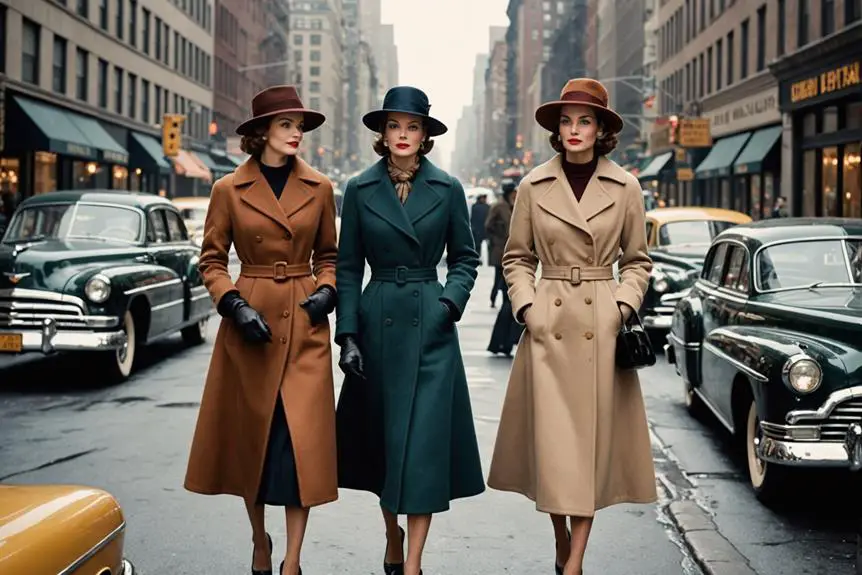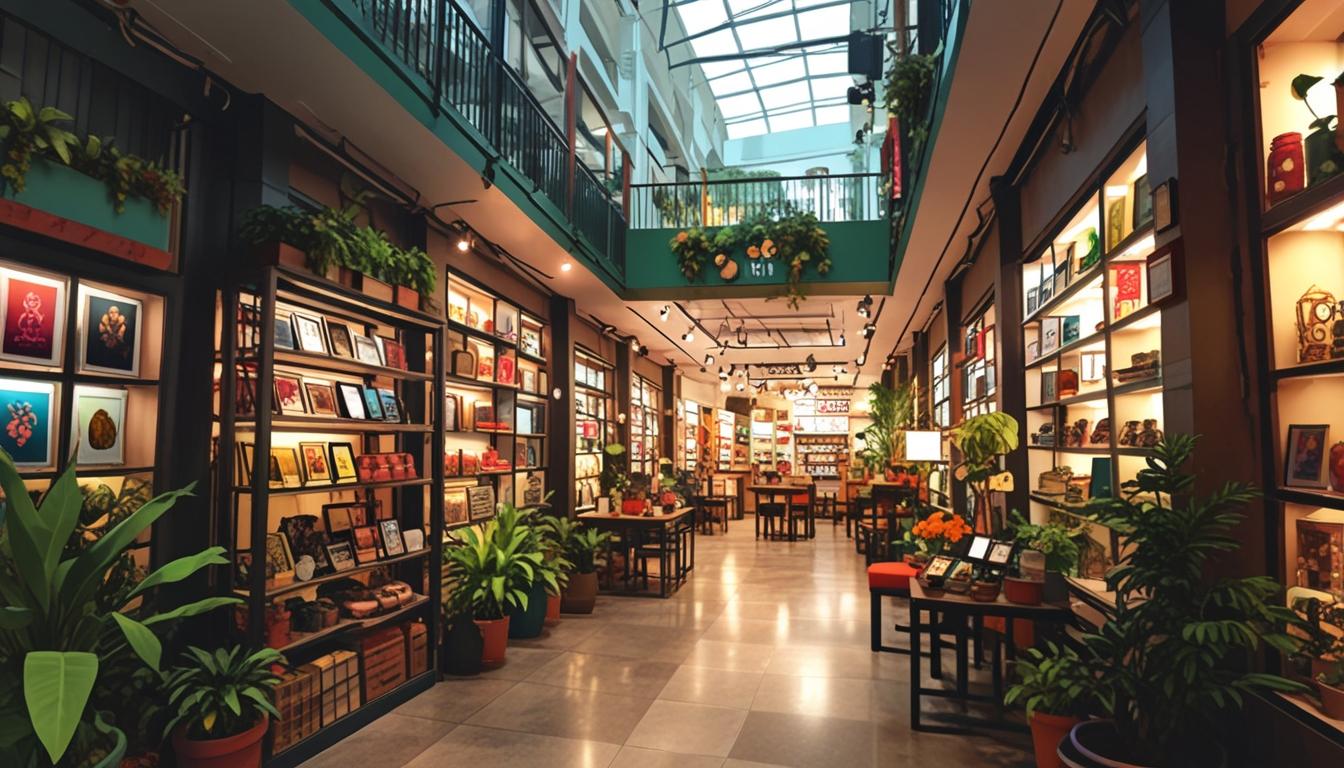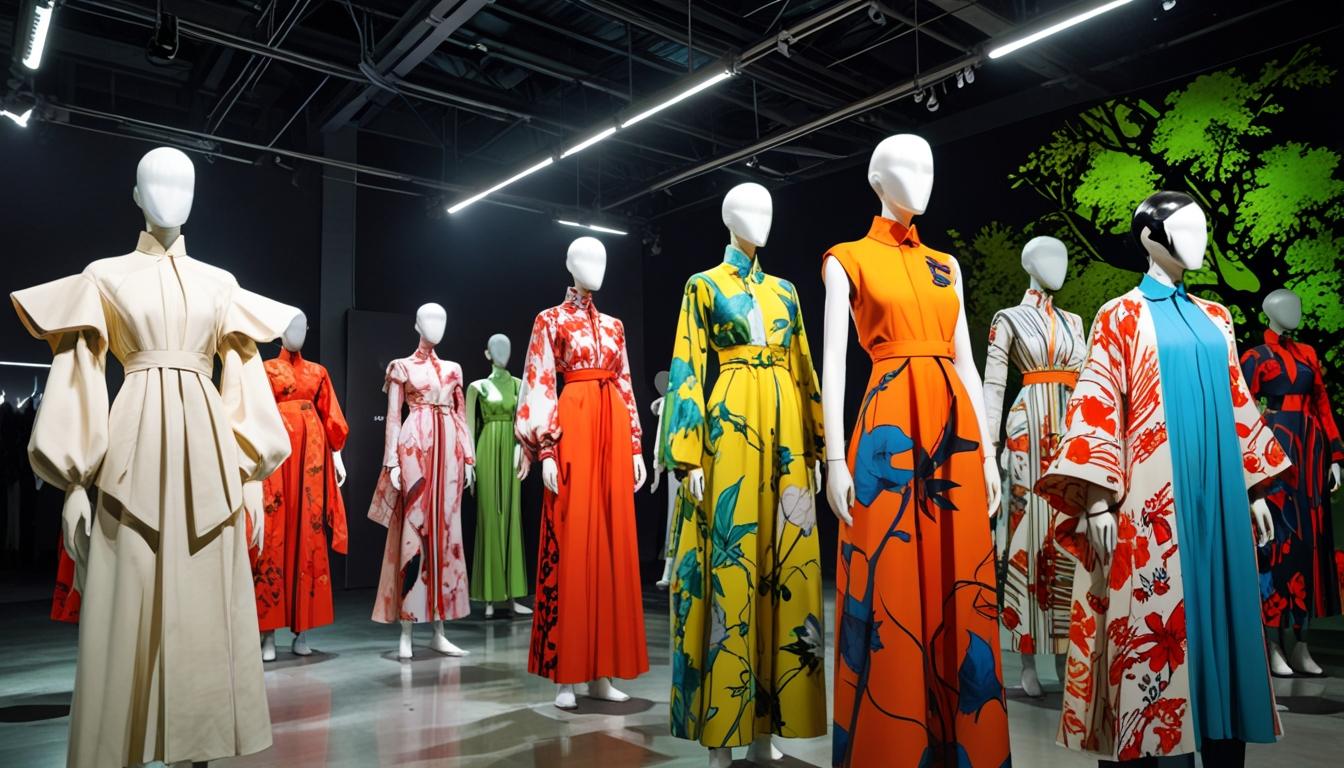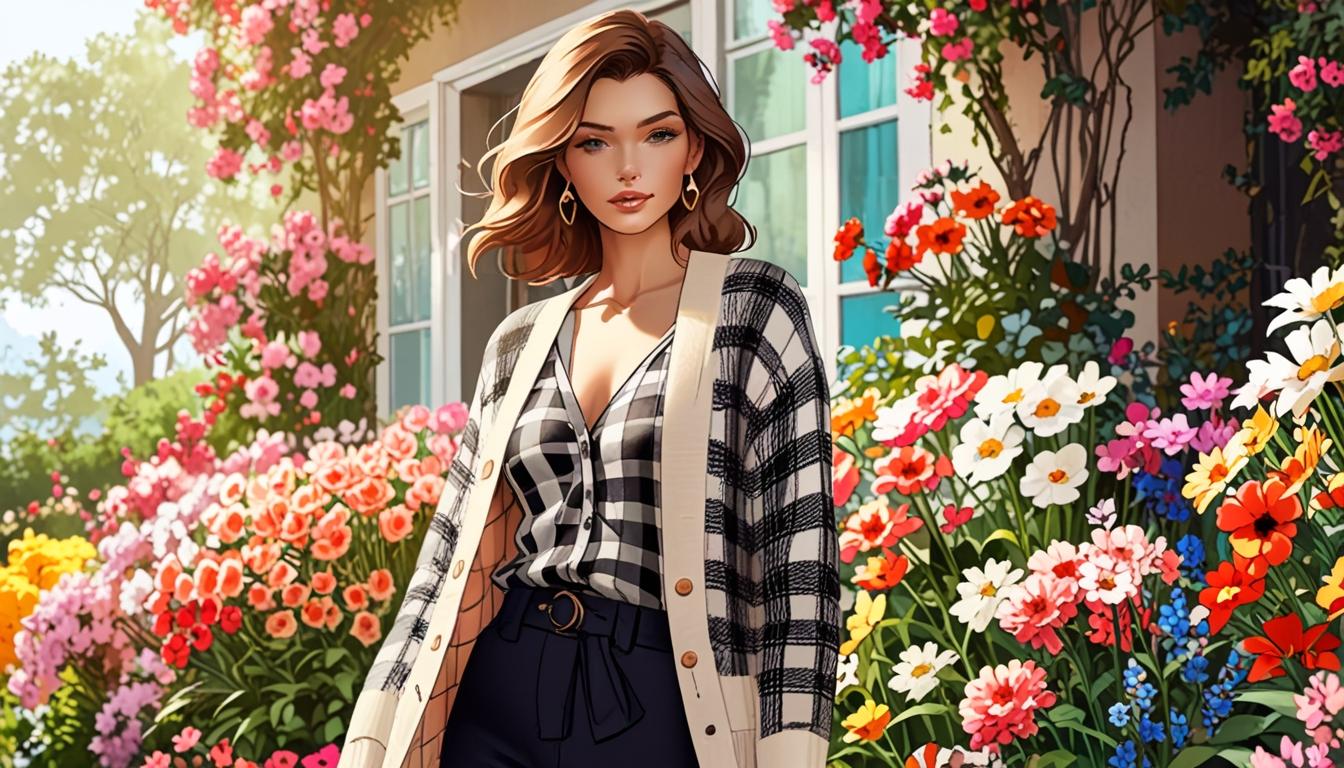When you look at the outfits in "Carol," it's clear they do more than just clothe the characters; they tell a story about identity and transformation. Carol's polished, luxurious pieces contrast sharply with Therese's evolving style, reflecting their diverse backgrounds and emotional journeys. Each garment is carefully chosen, evoking the 1950s aesthetic while serving as a visual narrative. But what deeper meanings might these fashion choices hold, and how do they enhance our understanding of the characters' relationships? Let's explore the intricate symbolism woven into their wardrobes.
Overview of Carol's Fashion
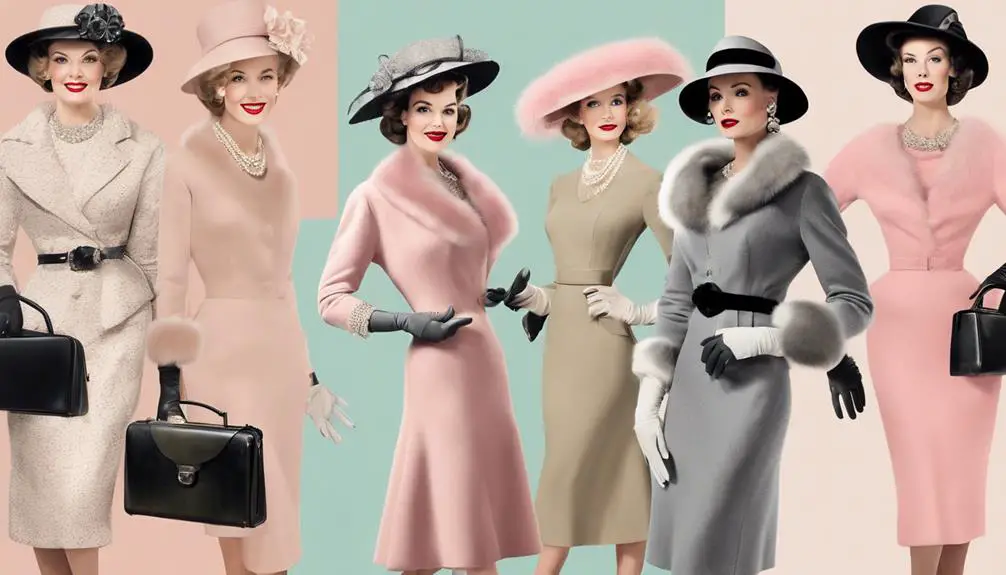
In "Carol," the fashion is a striking reflection of the character's affluent lifestyle and the era's aesthetic. You'll notice how Carol's outfits are meticulously crafted, showcasing the luxury and elegance of the 1950s. Each piece in her wardrobe, from tailored suits to polished dresses, highlights her sophisticated style while also serving as a narrative tool, revealing her emotional journey throughout the film.
A standout item is her vintage blonde mink fur coat, a signature piece that not only emphasizes her wealth but also cements her social standing in the film's 1952 setting. The luxurious fabric and structured silhouette of her outfits are heavily inspired by high-fashion magazines of the time, reinforcing her status and taste. Accessories play an essential role, too; estate jewelry from renowned designers like Fred Leighton and Van Cleef & Arpels elevate her look, adding layers of sophistication.
To achieve that iconic 1950s silhouette, Carol often wears structured undergarments, such as waist cinchers and girdles, which define her figure and enhance the overall elegance of her style. Each outfit is carefully selected, reflecting not just her fashion sense but also the societal expectations she navigates. Carol's fashion, with its vintage flair and attention to detail, invites you to appreciate the complexities of her character while immersing you in the lavish world she inhabits. It's a visual feast that perfectly encapsulates the essence of luxury and the emotional depth of her journey.
Therese's Style Journey
How does Therese's style reflect her evolution throughout "Carol"? At the start, Therese's wardrobe leans heavily towards the practical and muted, embodying her working-class background and youthful innocence. This simplicity emphasizes comfort, allowing her to focus on her job at the department store rather than her appearance. Significantly, her choice of clothing may also resonate with the nostalgic appeal reminiscent of vintage fashion, much like the iconic Juicy Couture tracksuits that symbolize a playful sophistication from the early 2000s vintage logo identification. However, as the story unfolds, her clothing choices evolve dramatically. Influenced by her relationship with Carol, Therese begins to embrace more sophisticated attire, showcasing her personal growth and burgeoning identity.
Key pieces in her wardrobe, like her delicate wristwatch and playful headbands, reflect her artistic aspirations and youthful spirit. These elements stand in stark contrast to Carol's luxurious attire, highlighting the difference in their lifestyles yet also revealing Therese's desire to explore a more glamorous world. The costume design draws inspiration from the street photography of the 1950s, connecting her style to the bohemian and creative youth culture of the time.
As you observe Therese's shift from uniform-like dresses to stylish, confident outfits, it becomes clear that her fashion choices are a visual representation of her journey of self-discovery. Each outfit signifies a step toward the bold woman she's becoming, driven by her experiences and emotions. Ultimately, Therese's style journey in "Carol" is not just about clothing; it's an inspiring narrative of evolution, self-expression, and the courage to embrace one's true identity.
Key Costume Design Elements
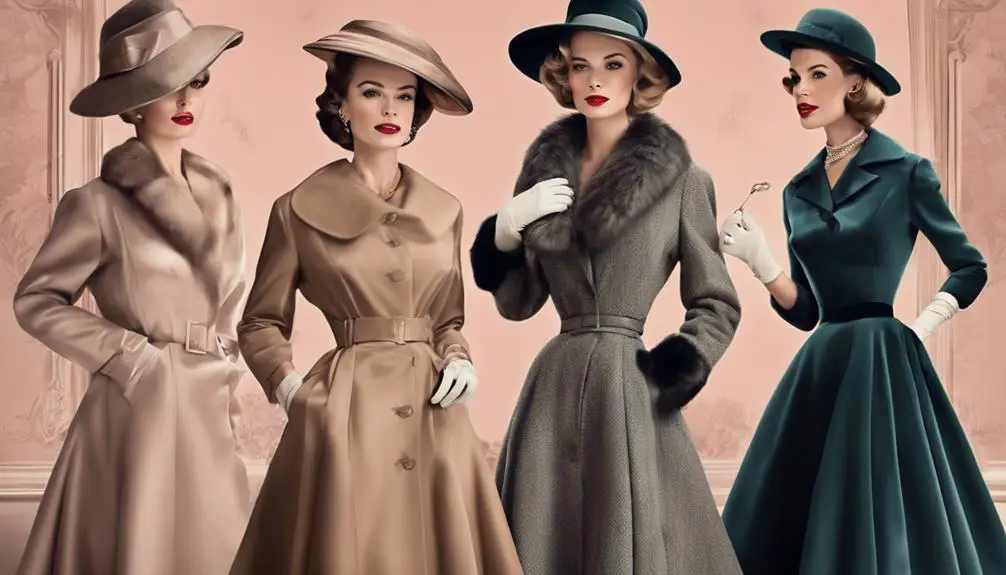
Therese's evolution in "Carol" is beautifully mirrored through the key costume design elements that Sandy Powell meticulously crafted. The contrast between the characters' wardrobes emphasizes their differing backgrounds and emotional journeys. Carol's luxurious fur coat, a quintessential piece of her wardrobe, showcases her social status and sophistication, while Therese's more muted, practical attire reflects her blue-collar roots. This color differentiation not only highlights Carol's privilege but also plays an essential role in their character development. The intricate details in their clothing, much like how to tailor a vintage dress, contribute to the authenticity of the time period and deepen the viewers' connection to the characters.
Powell's attention to detail is evident in the structured undergarments employed to create Carol's iconic 1950s silhouette. The use of waist cinchers and girdles is vital, as they enhance the vintage aesthetic and contribute to the overall allure of Carol's style. Accessories also play a significant role; estate jewelry from Fred Leighton and bespoke hats elevate Carol's sophisticated persona, adding depth to her character.
As the narrative unfolds, costume changes signify emotional milestones for both characters. You'll notice how Therese's evolving style mirrors her journey of self-discovery and maturity, shifting from simpler designs to more expressive choices. Each outfit not only serves a functional purpose but also marks a pivotal moment in her personal growth. Through these key costume design elements, Powell expertly captures the essence of both characters, making their journeys visually compelling and deeply relatable, ensuring that every garment tells a story.
Symbolism in Wardrobe Choices
Wardrobe choices in "Carol" serve as powerful symbols of the characters' inner lives and societal positions. Carol's luxurious wardrobe, characterized by rich fabrics and structured silhouettes, clearly reflects her wealth and societal status in the 1950s. These opulent garments contrast sharply with Therese's more practical, muted clothing, symbolizing their differing backgrounds and emotional journeys. While Carol adorns herself in vibrant colors that express her individuality and liveliness, especially in moments of emotional freedom, Therese's simpler attire highlights her youthful innocence and the search for self-discovery.
The symbolism in wardrobe choices extends beyond the fabric and colors. For instance, the contrast between Carol's manicured hands and Therese's unvarnished nails illustrates their distinct lifestyles—Carol's polished exterior representing her refined sophistication and Therese's casualness embodying her naivety. In addition, Carol's estate jewelry emphasizes her adherence to societal expectations, elevating her character's internal struggles against the confines of her oppressive marriage.
As you observe these choices, you can see how they enhance the visual storytelling of the film. Carol's journey of emotional growth is vividly illustrated through her clothing, as she navigates the complexities of love and identity. Therese's wardrobe, though practical and muted, reflects her own transformation and evolving understanding of herself. Together, these wardrobe choices create a rich tapestry of symbolism, inviting you to explore deeper themes of luxury, societal status, and personal growth in this beautifully crafted narrative.
Influence of Accessories and Details

Building on the symbolism of the characters' clothing, accessories in "Carol" play a vital role in enhancing the narrative and further defining the characters' identities. The film's protagonist, Carol, embodies sophistication and affluence through her striking choice of accessories, which elevate her status and persona. Estate jewelry from renowned designers like Fred Leighton and Van Cleef & Arpels not only adds sparkle but also emphasizes her high social standing, making her a figure of admiration. The meticulous selection of accessories reflects a keen awareness of Gucci's brand history, showcasing how fashion choices can convey deeper meanings about wealth and identity.
Vintage handbags and bespoke hats are integral to Carol's wardrobe, grounding her character in the fashion trends of the 1950s while reflecting her polished style. Each accessory is meticulously chosen, from custom-made Ferragamo shoes inspired by 1940s and 1950s patterns to newly-constructed leather gloves that match her shoes perfectly. These details create a cohesive appearance that speaks volumes about her attention to detail and taste.
The use of accessories in "Carol" goes beyond mere decoration; they serve as visual markers of wealth and status, playing a significant role in the film's narrative. Each piece contributes to the rich tapestry of her character, weaving together themes of desire, identity, and societal expectations. As you explore the significance of these accessories, you'll appreciate how they not only enhance Carol's outfits but also encapsulate the essence of her character, making the film's depiction of 1950s elegance truly unforgettable.
Frequently Asked Questions
Is Carol Movie Lgbtq?
Yes, "Carol" powerfully showcases LGBTQ representation, depicting queer love against 1950s culture's societal norms. Its narrative style emphasizes emotional depth and character development while exploring forbidden romance, earning critical reception for its authentic portrayal of love and fashion influence.
Was Carol Filmed on Film?
Yes, you'll find "Carol" was filmed on traditional film, enhancing its vintage aesthetics. The director's choices in cinematic techniques, period accuracy, and sound design contribute greatly to character development and audience reception, creating a rich narrative structure.
Where Was the Movie Carol Filmed?
When exploring "Carol," you'll find its filming locations in Cincinnati, embodying 1950s aesthetics. The production design reflects historical context, with significant spots like Findlay Market, showcasing behind-the-scenes insights and cast experiences that enrich the narrative.
Is Carol a Good Movie?
If you're considering "Carol," you'll find its themes resonate deeply, with rich character development and stunning cinematic techniques. The emotional impact, combined with thoughtful costume design and a mesmerizing soundtrack, enhances its powerful narrative and audience reception.
